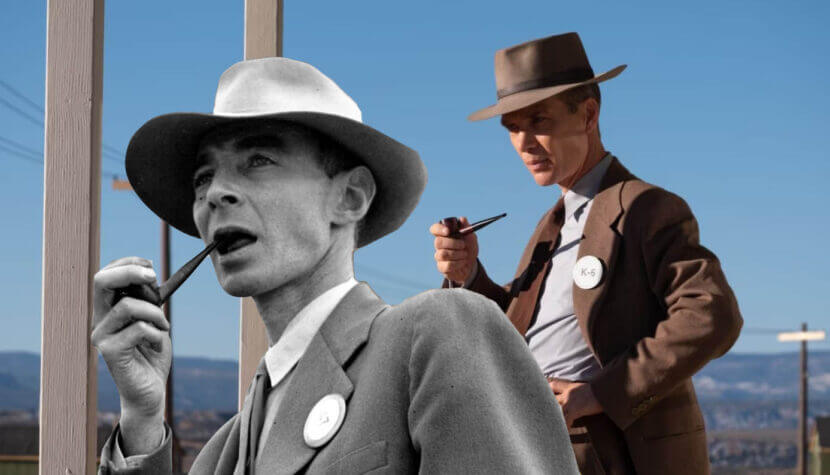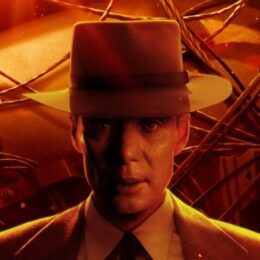Features
OPPENHEIMER. Facts and Myths. What is fiction in Nolan’s film?
“Oppenheimer”. What is true and what is fiction in the film? We examine Nolan’s latest movie closely. Warning: Spoilers!

Oppenheimer is definitely one of the biggest cinematic events of this year. The film about Robert Oppenheimer, known as the father of the atomic bomb, shocks, evokes emotions, and rekindles the discussion about the state of the world. We scrutinize Christopher Nolan’s film and examine what is true in it and what has been altered for the sake of the plot’s drama. Although there are certainly some slight modifications to the history, we admit that we haven’t seen a film so faithful to the events in a while.
7 Truths of "Oppenheimer"

- Even though Christopher Nolan emphasized in interviews that he aimed to avoid judging the characters’ actions in the film, he didn’t shy away from portraying them from both their positive and negative sides. I commend his courage, as the scene in which Oppenheimer injects poison into his teacher’s apple can send shivers down some viewers’ spines. Especially considering that Oppenheimer did indeed attempt to poison Professor Patrick Blackett, who was known for pushing students to their limits. However, it’s not true that Niels Bohr nearly ate the apple; I will address this in the next section where I’ll discuss fictional elements in “Oppenheimer.”
- Regardless of your opinions about Oppenheimer’s marriage to Kitty and their decision to temporarily entrust their son to acquaintances, this is true. In 1941, when Peter was two months old, Oppenheimer and Kitty left him in the care of Haakon and Barbara Chevalier for two months. Oppenheimer justified this decision due to his wife’s mental and physical exhaustion, taking her to a ranch in New Mexico at the time.
- It’s true that Los Alamos was the location of the Manhattan Project. For the production, Christopher Nolan meticulously reconstructed the town of Los Alamos, paying attention to the smallest details. Furthermore, Nolan built a replica of the town near the original Los Alamos site. As Matt Damon mentioned in an interview, “You could see the actual test site and the location of the original town on the horizon.” In some shots in the film, we can also see the real interiors of the Manhattan Project buildings, as Nolan obtained permission to enter the existing structures of the program. This included the house where Oppenheimer lived with his wife and two children.
- One of the main themes in the Oppenheimer film is the interrogation of Oppenheimer to determine if he can still be considered a loyal citizen and be granted security clearance. This event did occur. It took place in 1954 and lasted for four weeks. It happened towards the end of the campaign targeting suspected communists and communist sympathizers. It’s true that the commission denied him clearance.
- One of the scenes in “Oppenheimer” that brought a touch of humor to the serious narrative was the one in which Oppenheimer suddenly starts giving a lecture in Dutch. Biographers confirm that such an incident did happen. Oppenheimer’s Dutch might not have been perfect, but he had learned it well enough in just six weeks to deliver a comprehensible lecture.
- The sound of the explosion was actually heard quite some time after the bomb’s detonation during the test. Feynman recalled that they only heard the massive blast and the rumble, like thunder, after about 90 seconds. It’s also true that Oppenheimer quoted the lines: “Now I am become Death, the destroyer of worlds.”
- Oppenheimer indeed never publicly expressed regret for creating and using the atomic bomb. It’s also true that he had immense remorse for what followed and attempted to dissuade the government from further atomic bomb development, but he faced disapproval.
Related:
7 Myths of "Oppenheimer"

- While it’s true that Oppenheimer wanted to poison his teacher, the Nobel laureate Patrick Blackett, it’s not true that Niels Bohr was present in the room and nearly ate the apple. Oppenheimer only met Bohr after Ernest Rutherford introduced them. The authorities at Cambridge University learned about Oppenheimer’s transgression and sent him to a psychiatrist when Oppenheimer’s father asked them not to press charges against him.
- In the film, Oppenheimer meets his future wife Kitty at a party. In one of the scenes, we are led to believe that despite being tempted, they restrain themselves from giving in to their immediate desire. We only see them in their first intimate scene during a horseback ride on the New Mexico ranch. In reality, Oppenheimer and Kitty didn’t hold back at the party. They caused a scandal by sleeping together after one of Tolman’s gatherings.
- In the film, it’s also suggested during the interrogation that Oppenheimer’s relationship with Jean Tatlock didn’t end while he was involved with Kitty. However, biographers argue that most evidence indicates that Oppenheimer’s affair with Tatlock ended in 1939, before he met Kitty. He only saw Tatlock again briefly before her suicide, when she asked to meet him.
- In the scene where the locations for the atomic bomb drop are being discussed, Stimson suggests bypassing Kyoto because he had honeymooned there. Alex Wellerstein argues that although Stimson was indeed in Kyoto, it didn’t happen during his honeymoon.
- While the scenes of Oppenheimer interacting with Einstein are beautiful in the film, Oppenheimer didn’t approach him to verify Teller’s calculations. According to the book “Oppenheimer: Portrait of an Enigma,” which the film is based on, Oppenheimer consulted with Karl T. Compton regarding Teller’s work.
- They didn’t actually know that creating the atomic bomb would end the war! They hoped so, but it wasn’t a certainty. The film seems to depict everything as if the bomb would definitely end the war. In December 1946, Karl T. Compton wrote in The Atlantic that dropping the bomb was like gambling, and Stimson simply hoped that the move would conclude the war.
- At a certain point in the film, Oppenheimer asks Charlotte Serber to make a call on his behalf. In reality, Serber wasn’t his secretary. Although she collaborated with his actual secretary, Serber worked in the classified library at Los Alamos.
We remind you that Oppenheimer is now showing in theaters. Share in the comments if you’ve already seen the film and let us know your impressions.
Advertisment



